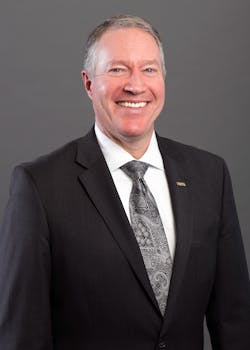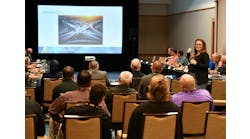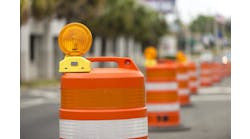With continued partisan gridlock in the U.S. Congress, it has been difficult for meaningful federal transportation initiatives to roll forward–and progress is likely to remain stalled until 2019 or later. President Trump admitted as much in a late-March speech when he predicted, “You’ll probably have to wait until after the election, which isn’t so long down the road.”
If a federal infrastructure plan does roar forth from Washington next year, it is difficult to speculate about what it might look like. Over the past two years, infrastructure investments nationally of $1 trillion, $1.5 trillion and (very recently) $1.7 trillion have made the headlines. Yet, details that have emerged so far from the Trump administration point to a modest $200 billion investment of federal dollars, with about half of that amount intended to incentivize states and municipalities, and the other half allocated for loans, grants and bonds.
This funding approach is being described as “leverage,” its philosophy being that a modest amount of investment will spur or enable far greater amounts through state and local fundraising efforts, and new investments of capital from the private sector (through public-private partnerships). Unfortunately, on this latter point, there is a major disconnect: Private capital typically doesn’t materialize with these kinds of ratios because it’s just too risky for prudent investors.
As a consequence, states and cities will have to shoulder a larger burden for building or restoring their roads, bridges, tunnels, airports and public transportation systems for the foreseeable future. Fortunately, governors, mayors and city councils have been practicing diehard self-reliance for decades now, thanks to a combination of political courage, voter support and industry innovation.
Two particularly prominent examples of visionary leadership and community resolve emerged on the west coast in 2016. Seattle voters supported ST3, which will provide $54 billion to fund various regional transit improvements, including light rail extensions and establishment of new bus rapid transit routes. In Los Angeles, voters overwhelmingly supported Measure M, which created a new half-cent sales tax (and extended an existing one) to generate $120 billion for transportation infrastructure over the coming decades. This is far and away the largest such infrastructure program in the nation’s history.
Of course, strong support for transportation investments has manifested in many communities. On Election Day 2017, voters approved four out of five of the more than 200 transportation-funding initiatives on local or statewide ballots. The funding mechanisms voters approved varied greatly, from fuel tax increases to new fees, and from sales taxes to more bonds, but the common theme was that people were willing to pay more for relief from traffic congestion, safer roads and bridges, and more responsive and connected public transportation options.
The go-to funding mechanisms above are only some of the options available. Some states are moving forward with interstate tolling as a strategy to both increase revenues from user fees and to help alleviate highway congestion by giving commuters additional options through managed lanes and other approaches. Technology is making toll collection and enforcement more practical in more areas of the country, so it is reasonable to believe that we will see more of this strategy in the coming years.
A major key to improving our transportation system will be bipartisanship at every level of government. There are encouraging signs at the state level, such as Fix NYC, which is a panel of representatives, government officials, and business leaders convened by New York Gov. Andrew Cuomo to creatively address Manhattan’s severe traffic congestion and deteriorating subway system. Among the panel’s recommendations is to make public transportation investments a priority, followed by implementation of zone pricing to mitigate downtown traffic snarls.
If such bipartisanship were to ever take root at the national level, we could get down to the business of making America’s transportation system a more resilient backbone for our economy and for everyday quality of life. All eyes are on Washington, but the example of forward progress is happening in states, cities and communities from coast to coast.



